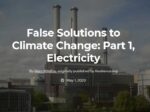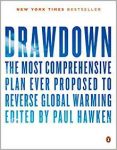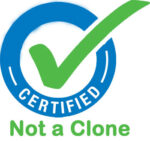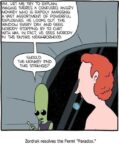The world is in terrible shape. But it doesn’t have to be like this! We could have a world of peace and prosperity, a world marked by cooperation instead of conflict; a world where cultural differences are seen as richness, instead of a reason to fight. The world will spend over a trillion dollars this year on arms, and more for armies. Imagine what that money could do if it were directed toward providing clean water and sanitation, basic education and health care. Some calculations suggest that it could completely satisfy these needs, worldwide, with a good deal left over. Suppose the money now going toward fighting wars in Iraq and Colombia were instead used to bring these basic services to the poor in those countries, no strings attached. Imagine the attitude of the people of those countries toward the USA then. Would there still be terrorists threatening us? Weapons production is capital-intensive, not labor-intensive, which means this approach would provide a lot more jobs than it would eliminate. Every dollar diverted would do double duty, because subtracting money for war would ease misery at the same time that spending that same money on productive and humane purposes would ease other misery.
But how can we make the transition from the unjust world we live in to that better one we could have, if only…? It seems to me that the only reason oppression continues is that we all participate in perpetuating it: we pay taxes to governments which then use the money for destructive purposes. We work as soldiers and police and lawyers and public relations people to protect the powerful from change. Even those who fight the system mostly stay busy turning the hamster wheels laid out for us by the System. We get grants from funding organizations which thus are able to keep our activities channeled into “safe” pursuits that won’t upset the status quo–like going to hearings, writing letters to the editor, pestering our members of Congress, and organizing rallies…and exhorting the other hamsters to turn the wheel faster. Meanwhile, outside the cage, the destruction we want to stop goes on apace, barely affected by our actions. When we’re ready to step out of the cage, that’s when we recognize that the cage exists only in our minds—but the hard part is, it doesn’t help much to free your own mind if you are surrounded by others who are still mentally colonized. Any vigorous motion on your part toward liberation and the ending of destructive practices—any direct action– is likely to lead to your colonized fellows throwing you in jail. So the key to the perpetuation of injustice is the manipulated belief systems of the public.
How can we liberate our fellows, when the oligarchy controls the mass media? Myriad excellent alternative media outlets already exist, especially on the internet but also on paper and occasionally on radio and television. Right now they don’t influence public opinion much because they’re preaching to the converted; the same five percent or so of the US public reads all these sites and papers and magazines and listens to the radio stations. We can’t make change until we reach the colonized majority.
I think that one key to increasing the use of alternative media by a greater percentage of the public is to encourage the young to seek out these alternatives. Values and ideas spread rapidly among youth, and from them to their parents. They also have the most at stake in changing the status quo.
A second key is depicting the alternative world. I have seen excellent analysis of all that’s wrong with the world and how it got that way—but I see one glaring lack. Very few columnists or filmmakers put time into imagining and depicting the alternative—the better world we could have if we took control of our own countries. One reason the public has been so accepting of the increasingly illogical and obviously dishonest worldview of the corporate-government-media complex is that they think that there is no alternative. Often, they’re told exactly that, and they’ve come to believe it.
Remember, people who have spent hours of virtually every day of their lives watching television have lost much of the capacity to visualize. We need to show them what the world could be like. We need to use clear and concrete terms, not vague abstractions. Preferably, we need to use images. What if profits for the few were not the overarching goal of society? What if future generations were viewed as having rights to a livable world; what if community were valued; what if all people had equal rights—then what might the world look like?
Maybe every house in most communities would have solar panels, or windmills. Thus would mean they could dispense with power lines, and utility bills. The insurance industry is another one that could be expected to wither in a more sensible and just world, where we take care of each other’s needs rather than allow those who can afford it to cover the risks. We could save billions on healthcare in this country if we provided it directly at government expense, rather than continuing with the absurdly complicated and wasteful system that enriches an industry that doesn’t even provide any healthcare….and we could see that everyone had the care they need. As useless industries withered, neglected ones would expand. Perhaps everyone could have access to expert massage and counseling, for example. But travel could become a much more time-consuming proposition, as the end of the fossil fuel age dictates that most of it be done the old-fashioned way—on foot, by horse or boat or bicycle. Yet this world might be a more relaxed, less competitive world in which people have more time.
If we can show people that better world that’s just out of reach–if we can make it real to them, by illuminating details–it might become irresistible. And then the transition would virtually take care of itself…although we can help it along by laying out transitional steps in equally clear detail.
The time has come to let that hamster wheel slow down, and come to a stop. Are you ready? Then step out of the cage, and start drawing pictures. Or writing plays, or making films or writing songs—find some way to depict alternate futures…your way, using whatever medium is natural to you. We need to show people these visions in every way we can.
We also need to abandon the structures of the unjust world we see around us everywhere, and begin setting up pieces of that better world, so we can start living in it. The energy we’ve been devoting to fighting against our “enemies” is wasted—they have long since figured out how to accommodate and absorb it. Let’s put that energy to constructive use. Let’s stop playing that losing game. It would help enormously to gather into conferences to brainstorm what kind of world we want, how to depict it, and how to get there.
But meanwhile, what can you do to depict a better world, or to help build it?












